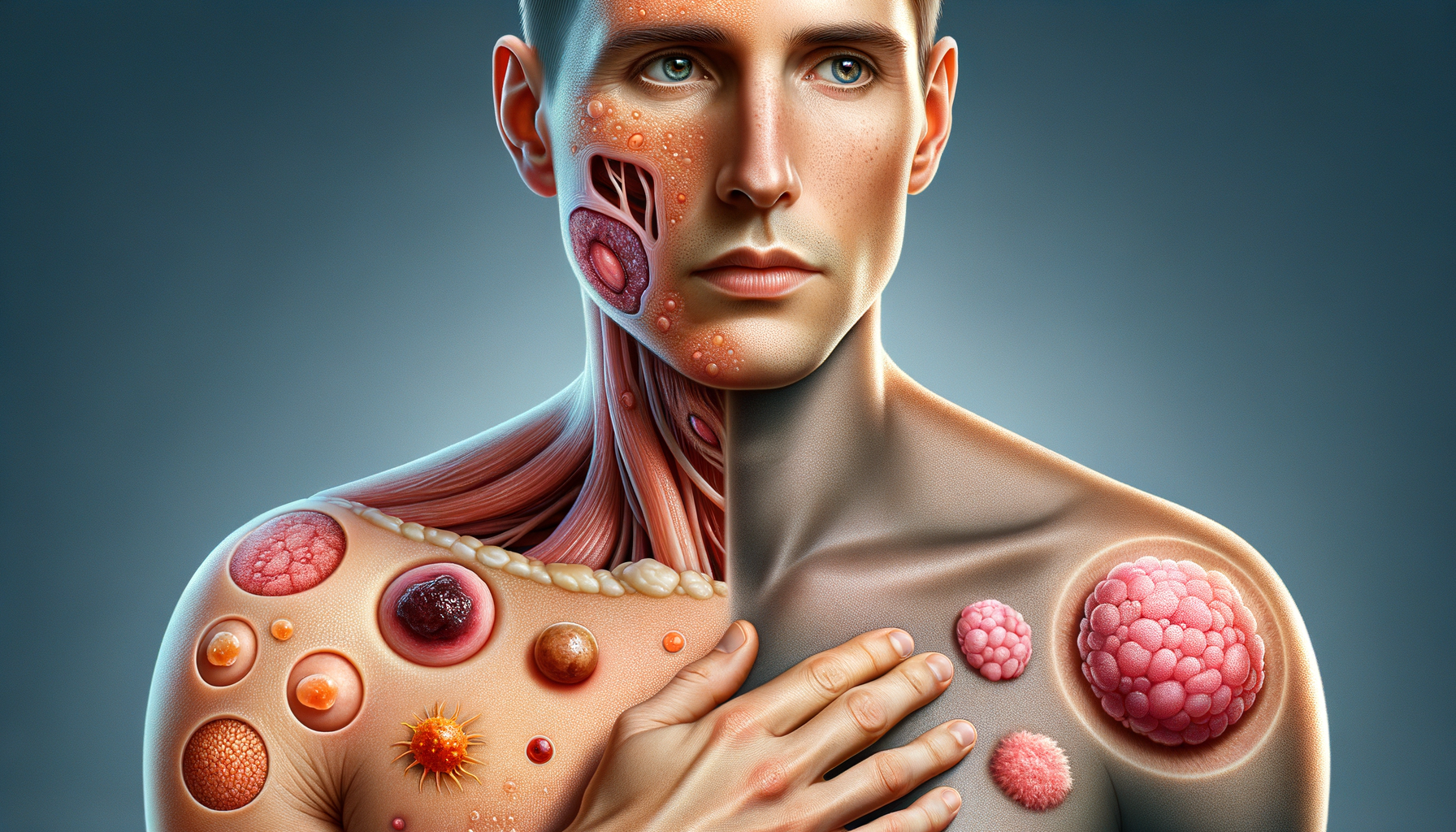Introduction to Skin Cancer
Skin cancer is a prevalent and potentially life-threatening condition that affects millions of people globally. As the largest organ of the body, the skin serves as a protective barrier, making its health vital to overall well-being. Skin cancer occurs when there is an uncontrolled growth of abnormal cells in the skin’s outermost layer, known as the epidermis. Recognizing the symptoms of skin cancer is crucial for early detection and treatment, as it significantly increases the chances of successful management and recovery.
There are several types of skin cancer, with the most common being basal cell carcinoma, squamous cell carcinoma, and melanoma. Each type varies in appearance, severity, and treatment approach. Understanding the symptoms associated with each can empower individuals to seek medical attention promptly, potentially saving lives. This article delves into the common signs of skin cancer, emphasizing the importance of regular skin checks and self-examinations.
Common Signs and Symptoms
Early detection of skin cancer hinges on recognizing its common signs and symptoms. While each type of skin cancer may present differently, there are general indicators that should prompt further investigation:
- New Growths or Lesions: Any new growth or sore that does not heal within a few weeks should be examined by a healthcare professional.
- Changes in Existing Moles: Alterations in size, shape, color, or texture of existing moles can be a warning sign of melanoma.
- Asymmetry: If one half of a mole does not match the other, it may warrant further inspection.
- Border Irregularity: Moles with edges that are ragged, notched, or blurred should be evaluated.
- Color Variation: Moles exhibiting multiple colors such as brown, black, tan, red, white, or blue can be concerning.
- Diameter: Moles larger than 6 millimeters (about the size of a pencil eraser) need attention.
- Evolving: Any change in a mole’s size, shape, color, or symptoms like itching or bleeding should be assessed by a doctor.
These signs are part of the ABCDE rule, a guideline to help identify potential melanomas. Regular self-examinations using this rule can assist in catching skin cancer early.
The Importance of Regular Skin Checks
Regular skin checks are vital in the early detection of skin cancer. These examinations can be performed by a dermatologist or through self-checks at home. Dermatologists recommend that individuals perform a thorough skin exam once a month, paying close attention to all areas of the body, including those not typically exposed to sunlight.
During a skin check, it is important to have good lighting and a full-length mirror. A handheld mirror can also be useful for examining hard-to-see areas. Enlisting the help of a partner or friend can ensure that no areas are missed. Key areas to inspect include:
- Scalp
- Face and neck
- Arms and hands
- Torso, front and back
- Legs and feet, including soles and between toes
- Under the nails
If any suspicious changes are detected, it is crucial to consult a healthcare professional for further evaluation. Regular skin checks can lead to early diagnosis, which is associated with more effective treatment outcomes.
Risk Factors and Prevention
Understanding the risk factors for skin cancer can aid in prevention strategies. Several factors can increase the likelihood of developing skin cancer, including:
- Excessive exposure to ultraviolet (UV) radiation from the sun or tanning beds
- Having a fair complexion, light-colored eyes, or red or blond hair
- A history of sunburns, especially during childhood
- Family or personal history of skin cancer
- Having many moles or atypical moles
- Weakened immune system
Preventative measures can significantly reduce the risk of skin cancer. These include:
- Wearing protective clothing, hats, and sunglasses when outdoors
- Using broad-spectrum sunscreen with an SPF of 30 or higher
- Seeking shade during peak sun hours (10 a.m. to 4 p.m.)
- Avoiding tanning beds and artificial tanning devices
- Regularly performing skin self-examinations and scheduling annual dermatological check-ups
By understanding and mitigating risk factors, individuals can take proactive steps to protect their skin and overall health.
Conclusion: Taking Charge of Your Skin Health
Skin cancer is a serious condition that requires vigilance and proactive measures for effective management. By understanding the symptoms, regularly checking for changes, and adopting preventive strategies, individuals can significantly reduce their risk and improve outcomes if diagnosed. The importance of early detection cannot be overstated, as it increases the likelihood of successful treatment and recovery.
It is essential for everyone to be informed about the potential signs of skin cancer and to take charge of their skin health. Regular skin checks, both self-examinations and professional evaluations, play a crucial role in early diagnosis. By prioritizing skin health and protection, we can work towards reducing the incidence and impact of skin cancer in our communities.








